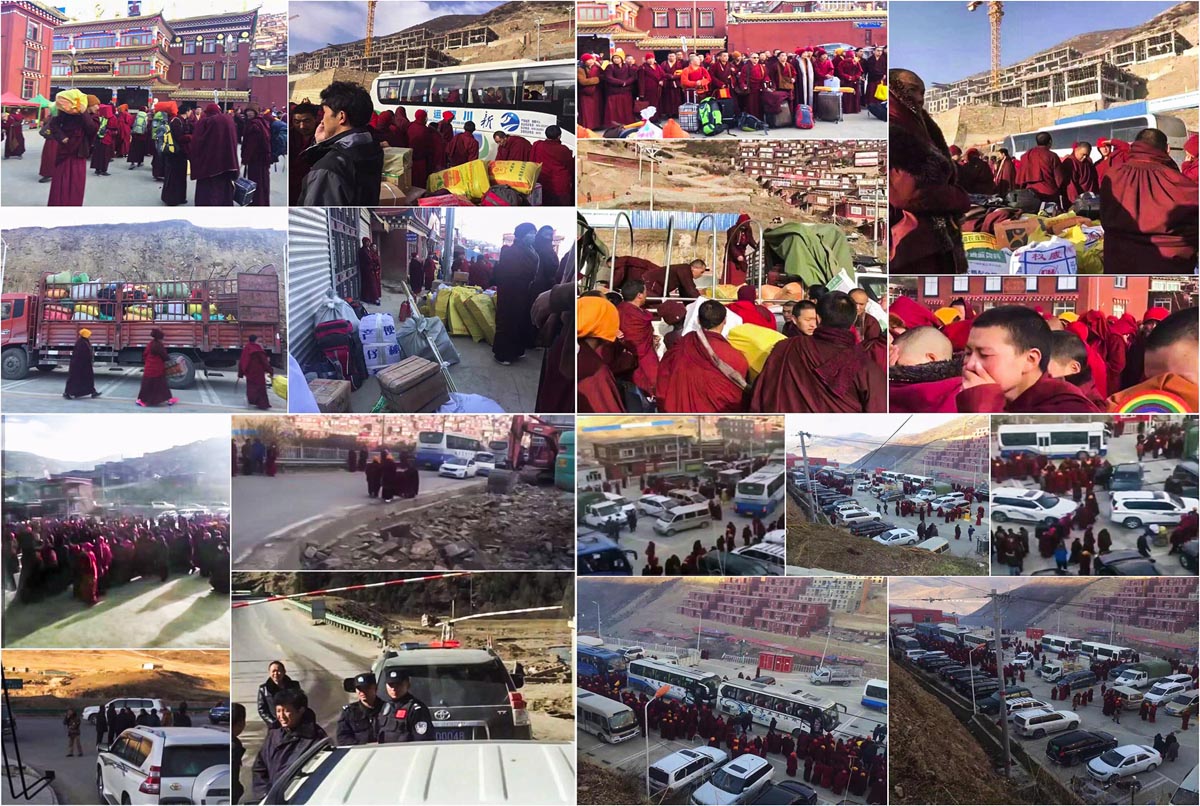 Dharamshala — According to local sources, after the removal of a final 250 nuns on April 6th, the forced removals of monks and nuns from Sichuan Province’s Larung Gar are now complete.
Dharamshala — According to local sources, after the removal of a final 250 nuns on April 6th, the forced removals of monks and nuns from Sichuan Province’s Larung Gar are now complete.
“Among them, some went to Golog [in Chinese, Guoluo] prefecture in Qinghai, where they are being allowed to stay at Tsida monastery, which is led by Khenpo Rigdar,” the source said, speaking on the condition of anonymity.
“This was done at their own wish and was made possible with help from members of Larung Gar’s management committee,” he said, adding, “Other groups returned to their home towns and have joined local monasteries there.”
About 5,000 monks and nuns have now been expelled from Serthar (Seda) county’s sprawling Larung Gar Buddhist Institute, while homes and learning centers continue to be destroyed, much to the protest of international organizations.
The institute was founded in 1980 by the late religious teacher Khenpo Jigme Phuntsok and is one of the world’s largest and most important centers for the study of Tibetan Buddhism.
On March 30th, a group of Chinese officials led by Sichuan provincial governor Yin Li arrived at Larung Gar to observe the ongoing state-ordered demolition of monastic dwellings there, a source had previously reported.
“He also convened a meeting of Larung Gar’s management committee and reminded them that the reduction in numbers of monks and nuns living there and destruction of their homes had been ordered by higher authorities,” the source said, also speaking on condition of anonymity.
“He added that anyone working against this plan would be breaking the law… He also pointed out that the houses remaining to be torn down would not be limited to the smaller dwellings, but would include some of the larger structures as well.”
The expulsions and demolitions at Larung Gar, along with restrictions at Yanchen Gar, another large Buddhist center in Sichuan, are part of "an unfolding political strategy" aimed at controlling the influence and growth of these important centers for Tibetan Buddhist study and practice, the Washington-based International Campaign for Tibet (ICT) said in a March 13 report, "Shadow of Dust Across the Sun."
"[Both centers] have drawn thousands of Chinese practitioners to study Buddhist ethics and receive spiritual teaching since their establishment, and have bridged Tibetan and Chinese communities," ICT said in its report.
Tibet was invaded by Communist China in 1949. Since that time, over 1.2 million out of 6 million Tibetans have been killed, over 6000 monasteries have been destroyed and acts of murder, rape, arbitrary imprisonment, torture and cruel, inhuman and degrading treatment were inflicted on the Tibetans inside Tibet. Beijing continues to call this a "peaceful liberation".


![Tibet has a rich history as a sovereign nation until the 1950s when it was invaded by China. [Photo: File]](/images/stories/Pics-2024/March/Tibet-Nation-1940s.jpg#joomlaImage://local-images/stories/Pics-2024/March/Tibet-Nation-1940s.jpg?width=1489&height=878)















